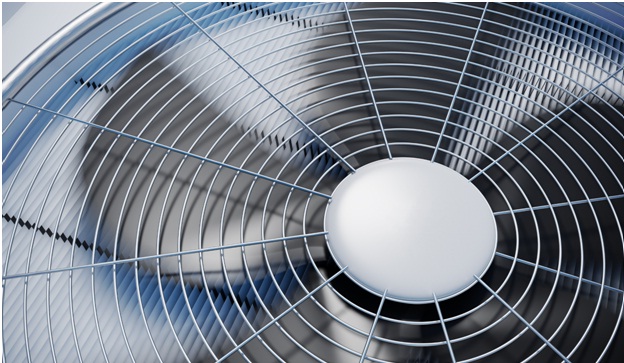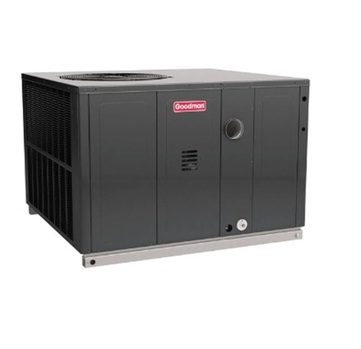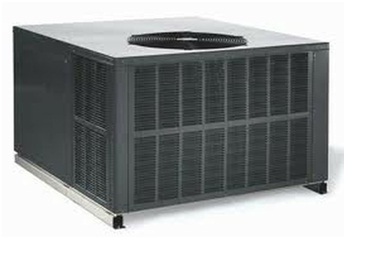More Than 5 Ton AC Package Units: What Are Your Options? (And What Are the Selling Points of Each?)

So you need to cool your home. You’re a little behind the eight ball for this season, since it’s almost August, but, as they say, better late than never. Or perhaps the situation is that you’ve sat through far too many sticky, muggy days this year because your system’s condenser just couldn’t take the moisture out of the air. Come next season, you want to be ahead of the game.
But are you going to get the same 5 ton AC package unit you bought the last time you upgraded the HVAC system of your home or business, or will you get something new? A different system entirely, perhaps?
If your current system isn’t performing up to your expectations, consider upgrading to a different system, such as one of these, which account for the majority of our package units.
Gas-Electric Package Units
A gas-electric packaged unit, which may also be called a gas pack, is one of the more popular, and more prevalent, types of package systems out there. Typically a gas-electric package unit contains both a dedicated electric air conditioning system as well as a gas furnace.
The electric portion of the system consists of a dedicated air conditioning unit that both cools the air inside of a home and also removes moisture from it, increasing the comfort of the interior. While these systems use up a lot of electrical energy, they are some of the most powerful systems, and thereby the most effective for removing energy from air, thereby cooling it.
However, a gas-electric system will also have a dedicated heating element in the form of a gas furnace that will probably burn either natural gas or liquid propane (LP) as a fuel. A gas furnace will burn these fuels, heating up an element known as a heat exchanger, over which cool air is passed to warm it. Then either the blower motor or an air handler will distribute These furnaces, like electric air conditioners, use a lot of fuel to produce energy, but they can be highly effective at heating a home.
One main difference between this type of AC package unit is that there are two separate components to the system. Some types of systems have only one unit that provides for both heating and cooling, like heat pumps (although these can be bundled directly together with other units as well.
As far as advantages of gas-electric units are concerned, there are plenty of situations in which one of these might be preferable to another 5 ton AC package unit , or a package unit of any size. For one, these systems are great in areas that have both very hot summers and very cold winters. The dedicated air conditioning systems and furnaces are better able to cope with these extremes of temperature.
Some will tell you that a gas pack is one of the more economical units to run because it may provide much higher energy efficiency than some other alternatives. This will, of course, depend on the unit, its Seasonal Energy Efficiency Ratio (SEER) and AFUE (Annual Fuel Utilization Efficiency) rating, but they are generally very energy efficient which means you might be able to realize energy savings.

Additionally, these types of systems tend to be better for those that live in colder climates, especially due to the dedicated efficiency and power of a gas furnace, which other forms of packaged AC systems may lack. Furnaces may burn fossil fuels, but they are remarkably effective at harnessing heat and ideal for those that need a lot of heating power in colder climates.
A gas-pack, depending on the system, may also be highly compact, which can make them suitable in environments that don’t have the luxury of a lot of space. If you are considering options that account for the limited space available inside your home, don’t write off gas packs. You may be able to enjoy the benefits of power, efficiency and space savings.
Packaged Air Conditioning Units
Another option in HVAC packaged systems are packaged air conditioning units, which are suitable for some of the hotter climates in the country. These systems are not entirely unable to provide for heating, but one thing is certain: they are expressly designed with cooling in mind.
Packaged air conditioners lack the furnace of gas-electric package units, opting instead for a more powerful dedicated air conditioning system that’s more suitable for hotter areas, especially those with hot, humid summers and mild winters. For example, if you turn your interest towards a 5 ton AC package unit of this nature, it’s probably going to come with a powerful air conditioning system as well as an air handler.
The purpose of the air conditioner itself is, understandable, to compress and cool the air, removing both heat and humidity from it. As for the air handler, the unit itself may also be able to assist the air conditioner in cooling off the air, especially on brutally hot days. However, the air handler’s primary purpose is to assist the air conditioner in managing the air, especially with larger volumes.
The blower motors associated with most air conditioning systems simply lack the raw power to circulate large volumes of air, especially when you get into 3 or 4 tons or higher. Air handlers have powerful blowers and are specifically designed to help circulate the air throughout the large interiors of homes, businesses and other buildings.
Now, while we have stressed that air conditioner packaged units are more suitable for areas where hotter temperatures are uncommon, they are not entirely incapable during the winter months. Though they are preferable only in areas with mild winters, if you equip your air conditioning packaged unit with a heat strip, you’ll be better prepared to tackle the winter.
An electric heat strip is a device that can be paired with most packaged air conditioning systems in order to provide heat during the colder months. Electricity is the fuel here, as it is for the air conditioner itself. Electricity is used to heat the strip through electrical resistivity, and then air is passed over the strip to exchange its energy. Then the air handler will circulate that now-warmed air throughout the rest of the home.
They work for their limited intended purposes, but there are two problems with heat strips that result in their relegation to only the warmer climates with milder winters. First, they are not powerful. They simply lack the raw power and are not capable of battling truly cold temperatures effectively. Secondly, they are highly inefficient, requiring a large amount of electrical energy that only gives back a little bit of heat in return.
All in all, packaged air conditioner systems like these are really only practical for those living in the hotter areas of the country. If it routinely gets cold where you live in the winter, then a gas-pack or a heat pump package unit is probably a much better choice. You’ll save money by not wasting electricity in the summer and you’ll be more comfortable. Nonetheless, if you live in the coastal south where it rarely gets cold, an AC pack, like a 5 ton AC package unit , might be just the ticket for your situation.
Heat Pump Package Units
Heat pump systems are very interesting package units that have quite a few advantages, given you employ them in situations that are well adapted to the benefits they provide. With a heat pump package unit, instead of having both a dedicated air conditioner and a gas furnace or an air conditioner with a heat strip, you have a unit called a heat pump that can both heat and cool the home.
The operation of heat pumps is fairly straightforward provided you take a high level view of the situation. Basically, heat pumps have a system of condensers and evaporators that are basically used to capture heat, consolidating it and moving it around a home’s interior or venting it to the exterior.
In the summer, when the goal of a heat pump system is to cool down the inside of a home, the heat pump gathers heat from the inside air and consolidates it, absorbing the energy into a refrigerant in the coil of the system before exchanging it to the outside. Once the refrigerant is passed to the outdoor lines, it can be vented into the exterior air. In this manner, a heat pump cools off a home’s interior by consolidating the heat inside and “taking it away.”
In the winter, the goal of a packaged heat pump is to provide heat for a home’s interior, but the system described above more or less works in reverse. What the heat pump does in the winter is collect and consolidate heat from the air or ground outside (yes, there is still energy in cold air) before condensing it and bringing it indoor, where it is allowed to release its heat energy.
Now, this may sound too good to be true, but it isn’t. You just need to be aware of the limitations of a heat pump. Typically, they are suitable only in areas that don’t get that cold, as they are more effective at cooling off a room than they are at heating it. That said, they are less powerful than dedicated air conditioners. So you might be wondering - since they aren’t as good at heating as furnaces and they aren’t as good at cooling as air conditioners, where’s the draw?
Well, heat pump systems are very energy efficient, and are great at limiting carbon emissions because they use less fuel per unit on heating and cooling than some other systems. While they aren’t as powerful, they are fairly efficient.
In addition to their efficiency, it’s also been noted that heat pumps tend to have long lifespans as well. Therefore, if you live in a place with relatively mild winters and summers that don’t get dreadfully hot, you may be able to save on some operating costs by upgrading to a heat pump package system which may lower your utility bills. Also - there are some systems that pair heat pumps with supplements for heating and cooling, so you may have another out there.
Hybrid or Dual-Fuel Systems

Finally, there are package systems that are known as hybrid or dual-fuel systems, and the last statement in the previous section provides a perfect segue, considering the fact that most dual-fuel systems consist of a heat pump and a gas furnace.
Little explanation is needed here, since we’ve already glossed over the operation of gas furnaces and heat-pump systems in this article, but the reason for this pairing is to supplement the limited heating power of heat pumps.
For this reason, these systems are suitable in areas where it never gets too hot. If your winters are particularly cold, averaging below freezing temperatures most of the time, and your summers are mild at best, then a dual fuel system, also known as a hybrid system, is probably your best bet.
Plus, with a hybrid system, you can still enjoy the benefits of the energy efficiency of a heat pump, without losing out on their limited ability to heat a home, bringing you the best of both worlds. You just have to be cognizant of the fact that these systems are not geared towards cooling. If it’s hot near you all year, an AC package unit like a 5 ton AC package unit is more suitable.
Need More Assistance? Call Us!
Still not sure what any of this means? Not sure where to start looking for your next air conditioning system because you aren’t sure about the unique needs of your home or the size of the system you’ll need? Never fear - Budget Air Supply is here.
We’re just a quick call away and our helpful specialists are more than willing to answer your questions and provide you with the level of service for which we are so well known. Just give us a call at 855-473-6484 and we will be happy to assist!
Recent Posts
-
Daikin Entra Series 18k BTU Mini-Split Heat Pump
When you need to deliver targeted heating and cooling to a specific room, addition, or garage, a duc …13th Jul 2025 -
ProParts Replacement Condenser Fan Motors for AC Repair
When your home's air conditioner stops cooling, one of the most common causes is a failed condenser …6th Jul 2025 -
Goodman 3.5 Ton 13.4 SEER2 Straight Cool Horizontal Package Unit
For homeowners and contractors seeking a durable, energy-efficient HVAC solution in a self-contained …29th Jun 2025



